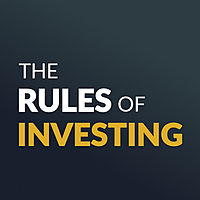30-year property veteran: Australia has its head in the sand on housing
As anyone who has renovated their home in recent years will tell you, construction costs have increased exponentially, largely because construction companies have been the worst impacted, and by a long shot, by the weakening economic environment.
According to ASIC's latest data, 2,897 construction companies entered external administration in the last year, up from 2,171 in FY23 and 1,245 in FY22. That's an increase of 133% in just two years.
"This is no doubt one of the great challenges and why, despite this chronic [housing] shortage, we're not seeing a big increase in construction," Resolution Capital's Andrew Parsons says.
There's no supply in residential housing nor the majority of segments of the commercial real estate market. Sky-high construction costs are now too prohibitive. Bandaid solutions, like rent control, only backfire. And inconsistent state, federal and local policies are not helping either, he says.
"The federal government dictates immigration, but it's the state and local governments that dictate planning. So, as a consequence, we're getting this inconsistency in policies... I'm not blaming it all on immigration. I'm just highlighting that as an easy example - that there is a disconnect in terms of big picture planning and housing," Parsons says.
There's also the fact that no one wants high-rises built in existing suburban areas, and urban sprawl has proven over time to be too expensive to maintain, Parsons says.
"So we're in a very tricky position... It's going to be very challenging to work through this problem. And by the way, it's not just Australia that's facing this. We're seeing this in many markets around the world," he added.
"We can't shut our eyes and pretend it's going to go away. We've got to be constructive about it. And obviously, there are so many different vested interests. It's a hard one to resolve."
While there is nowhere near enough supply to house Australia's growing population, long-term investors in real estate will likely benefit. There's less competition, which means investors have pricing power. And any new builds will require significantly higher rents to justify higher construction costs. This is particularly true in commercial real estate, where values have fallen by around 20% over the last five years and many assets are now trading at or below their intrinsic value, Parsons says.
In this episode of The Rules of Investing, Parsons dives into Australia's property problem, outlines what he believes to be the solution, and shares why listed property is in for a strong three to five years ahead of us.
Note: This episode of the Rules of Investing was recorded on Wednesday 17 July 2024.
Other ways to listen:
Timecodes
- 0:00 – Introduction
- 2:06 – A fascinating, under-appreciated part of the market
- 3:45 – What is a REIT?
- 5:30 – The key distinctions between REITs and physical property assets
- 8:45 – Which do you prefer: an investment property or listed property assets?
- 9:50 – Where REITs sit alongside equities and fixed income
- 10:55 – What you’re really paying for when you buy real estate
- 12:50 – Why property development is so difficult currently
- 13:40 – Australia’s troubling property supply shortfall
- 15:04 – “We don’t want urban sprawl”
- 16:30 – How do you solve Australia’s big property problem?
- 20:50 – The effect of interest rates on listed property, versus equities and bonds
- 23:40 – How Resolution Capital is currently positioned
- 33:50 – What is your best investment of all time?
- 38:08 – Resolution Capital’s five-year pick
5 topics
1 contributor mentioned


